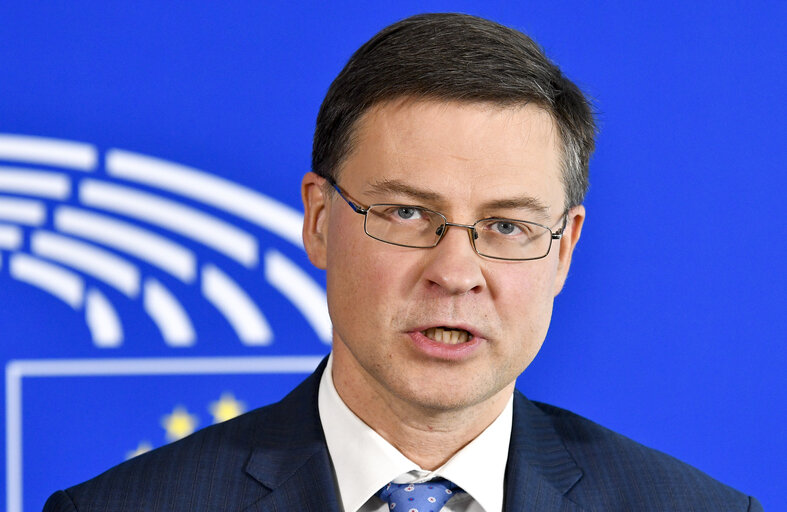After more than a decade of stalemate, India and the EU are showing renewed urgency to finalise a Free Trade Agreement. Both parties now describe the deal as strategically essential in a shifting global environment, even if several technical and political hurdles stil await resolution. The two parties are now aiming to finalise the agreement by the end of the year.
In recent months, the EU has intensified its efforts to diversify supply chains, reduce dependencies, and defend its economic model. The era of “de-risked globalisation”, as Commission President Ursula von der Leyen has dubbed it, calls for such flexibility. India, meanwhile, is leveraging geopolitical interest from the EU, US, and others to position itself as the next manufacturing and services hub.
Political momentum is building. Ms von der Leyen recently reaffirmed that “our shared ambition is clear: to conclude an EU-India trade deal by the end of the year,” adding that the two sides are “making solid headway towards a balanced, mutually beneficial deal.” Valdis Dombrovskis, Commissioner for Economy and Productivity, has described the talks as “technically advanced”. Earlier this week, Piyush Goyal, Indian Minister of Industry and Supply met with Maroš Šefčovič, EU Trade Commissioner, on the sidelines of an OECD event in Paris.
(The EU and India) are making solid headway towards a balanced, mutually beneficial deal. Ursula von der Leyen, EC President
Eight down, about twelve to go
According to sources close to the negotiations, at least eight of the agreement’s roughly twenty chapters are ready, or close to finalisation. One of the key breakthroughs of the last round of negotiations is the exclusion of certain agricultural products from the deal, most notably dairy. India, home to millions of smallholder farmers, is the world’s largest producer of milk. Protecting this sector is a political and economic priority for New Delhi. Indian negotiators have made it clear that they want to avoid a situation in which cheaper dairy imports from Europe flood the domestic market. That could threaten the livelihoods of Indian farmers. As a result, dairy products remain firmly off the table in the FTA talks.
Rice, another politically sensitive staple, will be missing in the agreement, too. This may raise an eyebrow or two. Several Asian countries, notably Japan, are currently experiencing what the BBC has called a “rice crisis”.
You might be interested
Obstacles remain
One of the remaining points of contest is the EU’s Carbon Border Adjustment Mechanism, or CBAM. This instrument, central to the European Green Deal, effectively imposes a CO₂ tax on imports of carbon-intensive goods from outside the EU. The aim is to ensure that European producers, who are subject to strict emissions regulations, are not at a competitive disadvantage to foreign manufacturers who face no such carbon-related costs.

India, however, sees it as a de facto trade barrier that could penalise its steel, aluminium, and cement exports. Indian officials have expressed concern that CBAM disproportionately impacts developing economies, calling for a “common but differentiated” approach. So far, no workaround, whether phased exemptions or carbon equivalence mechanisms, has seen the light of day.
The third-country quandary
Rules of origin forms another remaining dispute in the negotiations. The EU is pushing for stricter criteria to ensure that only goods made in India benefit from tariff-free access. It wants to avoid a scenario where products manufactured in third countries, particularly China, will bypass the tariffs after a minimum processing (or simply re-routing) through India. New Delhi, however, argues that overly rigid criteria would dilute the practical benefits of the FTA, especially for its key export sectors such as electronics and textiles, where production often relies on globally sourced components. Even if final assembly takes place in India, tighter rules could disqualify these products from preferential treatment. A compromise on this is yet to materialise.
Meanwhile, the EU has previously voiced dissatisfaction with the level of market access India is offering for cars and alcoholic beverages. However, India was willing to cut import duties on spirits, cars, textiles, and engineering goods in its recent trade deal with the UK. It may be an indication that it is open to making similar concessions in its agreement with the EU as well.
A deepening partnership
Even without an FTA, the EU is already India’s second-largest trading partner, accounting for goods trade worth €120bn in 2024, around 11.5 per cent of India’s total trade. With India now the world’s most populous country and a rising economic powerhouse, the EU is eager to deepen its economic ties.
It already tried to do so in 2007, when trade talks were first launched. But negotiations stalled in 2013, largely due to EU concerns over India’s, in the EU’s view, protectionist stance. Key sticking points included limited market access, strict patent laws, and European reluctance to grant greater labour mobility for Indian professionals in the EU.
Shifting geopolitical dynamics have led the EU to see India in a new light. Rising tensions with China, strategic uncertainty surrounding the US, and a growing push in Brussels for supply chain diversification have been making India appear a more attractive and reliable partner. For the EU, strengthening ties with India is part of a broader effort to build resilience and reduce strategic dependencies.
The interest is mutual. India is looking to diversify away from its deep economic ties with China, and its relationship with the US, while strategically important, is not without friction. India also comes to the table with leverage: it has recently advanced or signed trade deals with the UK, Australia and the UAE, and gets a lot of attention from both Washington and Tokyo.
Cooperation, not dependency
India remains cautious. In a recent interview with Politico, Indian Foreign Minister S. Jaishankar stressed that India seeks cooperation, not dependency. “I don’t see this as just buying more weapons from Europe,” he said, referring to the growing defence relationship. “We do very few pure buys now… [We want] cooperation on design.”
The same logic applies to trade. India wants economic partnerships that support its “Made in India” industrial strategy, not agreements that simply promote market liberalisation without reciprocity.
The twelfth round of FTA negotiations is expected in July, with “extensive engagements continuing in the meantime,” according to EU trade spokesperson Olof Gill.





